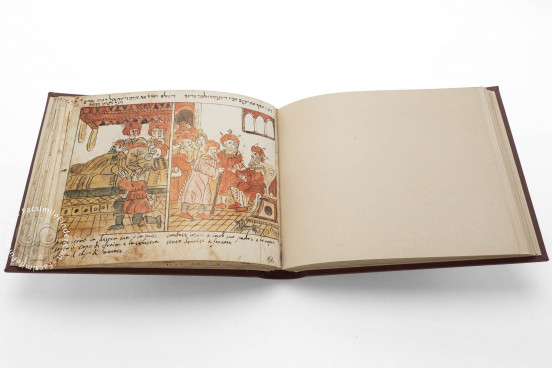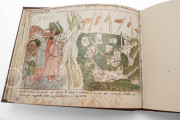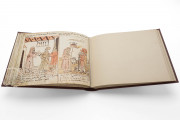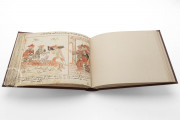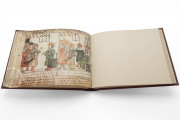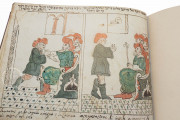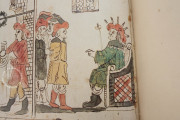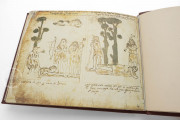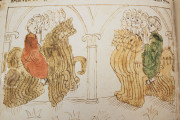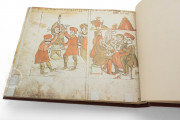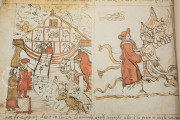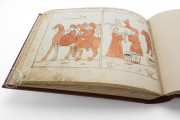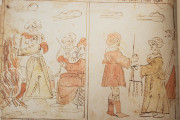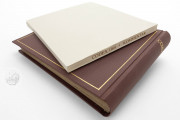In the Codex Choumach, a picture Bible with scenes from the first five books of the Old Testament (Pentateuch), a number of various illustrations is flanked by interpretive legends and Bible verses as headings. Another example of this depiction style is the Sephardic Pesah-Haggadot.
Various Traditions in One
The Codex Choumach combines various pictorial traditions into a coherent whole. This fascinating book, now preserved in Warsaw, comprises a number of woodcuts by Moses dal Castellazzo. Though the originals went lost, somebody, possibly a Christian humanist, had it made in the sixteenth century. The pictures are only occasionally tainted red, green or brown. The depictions begin with the Creation and end with the death of Moses. The book was extremely popular among its contemporaries, and is viewed by scholars as a witness to the lifestyle and times of a dying epoch.
Biblical Images, Hebrew and Italian Legends
The principal element of the Codex Choumach lies in its depictions, whose significance is explained in a few lines of text. The Biblical scenes are not show in a single depiction; rather, the illustrations often reproduce a cycle of scenes presenting their protagonists at several stages of the narrative, just like in a pictorial chronicle. As in the Hebrew tradition, read right to left. The rectos of the folios generally display two pen-drawings, while the versos are often blank. Most pictures have upper margins with Hebrew text or Biblical verses explaining the underlying picture. On the other hand, the pages' lower margins often display captions in Italian in various lines of text. Both the language (Venetian vernacular) and the type of script point to some time around the mid-sixteenth century.
The Artist: Moses dal Castellazzo
Extremely renowned in the Jewish community, Moses dal Castellazzo enjoyed great fame. In a note to Venice's "Council of the Ten" dated 1521, he describes himself as producer of woodcuts, thereby requesting a unique right to produce and sell a series of them describing the Pentateuch. In order to produce his woodcuts, Moses dal Castellazzo used a very similar method to the one that had been in use for half a century, when Johannes Gutenberg perfected the technique of moveable type. He used various sources, numerous picture Bible manuscripts and woodcut depictions from early Venetian prints, to which he added contemporary features such as costumes. In Picture Pentateuch, Moses managed to 'save' the picture Bible tradition for the new age of printed books.
We have 1 facsimile edition of the manuscript "Codex Choumach": Codex Choumach : Bilder-Pentateuch d. Moses Dal Castellazzo facsimile edition, published by Akademische Druck- u. Verlagsanstalt (ADEVA), 1986
Request Info / Price
